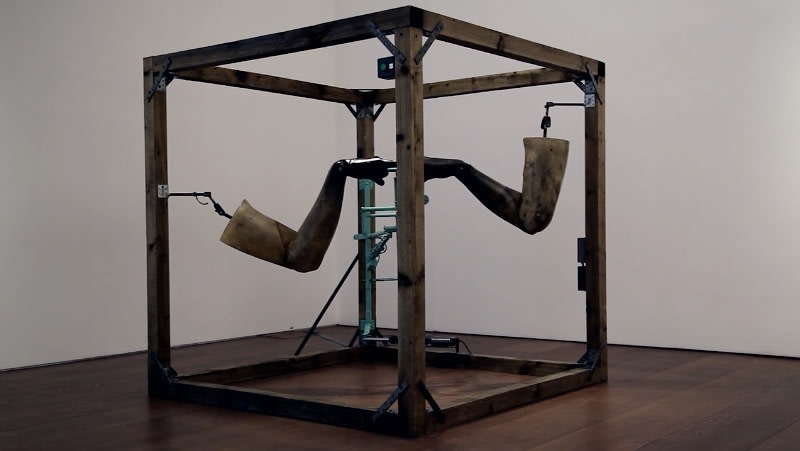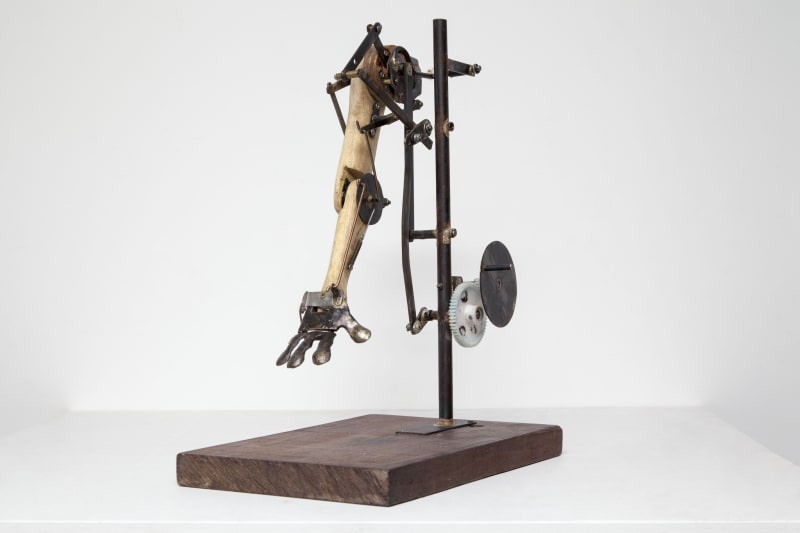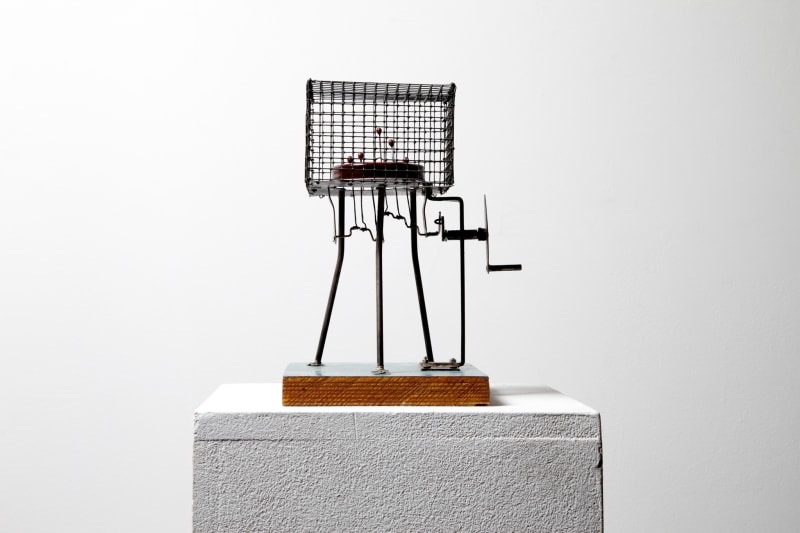Overview
Assemblages of inert materials such as steel, wood and wire appear to take on a life of their own through Lewis’s mechanical interventions, at times autonomously whirring into existence, or responding to the operation of the viewer.
Flowers Gallery is pleased to announce an exhibition of new work by Tim Lewis. On view will be a series of mobile sculptures, continuing Lewis’s signature use of machines to endow objects with functions and qualities that extend beyond their natural limitations.
The title Beneath Above suggests a fluidity between two oppositional states, or a process of transition. Assemblages of inert materials such as steel, wood and wire appear to take on a life of their own through Lewis’s mechanical interventions, at times autonomously whirring into existence, or responding to the operation of the viewer. Each sculpture is characterised by the performance of a sequence of repetitive actions.
Several of the works on display are framed by cube-like structures, which Lewis refers to as ‘isolation chambers’. This marked delineation between the internal and external space of the construction implies the existence of an alternate reality taking place within. This can be seen in the sculpture Abducted Planet, where a large rotating steel globe, orbited chaotically by two smaller spherical shapes, appears to possess its own distinct atmosphere and gravitational field.
Following on from Lewis’s ongoing use of human figures or body parts, the exhibition includes several sculptures of disembodied limbs animated through the assembly of cogs, levers and pulleys. Salutation, which is the fragmented prototype for a larger, future sculpture, takes the form of a carved wooden arm, raised through the action of a hand-crank to perform a sinuous gesture of the wrist. The sculpture Beneath Above, from which the exhibition takes its title, features two arms engaged in a rhythmic articulation of a simple movement, reminiscent of the animated dialogue of shadow theatre.
As an extension of the body, Lewis’s drawing machines automate the expressive process of mark-making, building an image over time through the recurrent path of the mechanised arm. One of two machines in this exhibition, Indelible draws an image of a heart struck through with an arrow, achieving its permanence through perpetually repeated motion.
The repetition of common physical gestures, separated from both daily reality and the context of the human body, evokes a sense of unease through a gradual erosion and re-evaluation of their meaning. The use of repetition also suggests futility – of action existing within a continuously present moment untethered from a linear sense of time.
This absence of continuum or narrative resolution can be seen in a horizontal sculpture titled after the science fiction writer Philip K. Dick, in which a ghostly figure is trapped inside an interminable maze of razorblades. With each revolution of a hand-crank, the character glides towards an exit that shifts location in order to prevent escape. The concept derives from a game within Dick’s 1967 Cold War satire The Zap Gun, set in the then-future world of 2004, in which consumer games were assembled from repurposed weapons designed by two opposing world-powers. Through the lack of conclusive relief, and the tragi-comic expression of the figure within the maze, Lewis uses pathos to evoke feelings of sympathy, whilst also questioning whether the ‘entrapped’ is the subject or the player of the game.
Of resolution in his work, Jasia Reichardt has written: “He seems to prefer leaving the outcome open-ended. His works always appear seductively thoughtful. They are more or less melancholy or funny according to the state of mind we bring to them.” *
* Jasia Reichardt, In Praise of Strangeness, 2004, Uncanny Valley Exhibition Catalogue, The Walker, Liverpool.
The exhibition coincides with his participation in A Curious Turn, a Crafts Council touring exhibition of moving, mechanical sculpture which first goes on show at Platform, Habitat, King's Road, London from 15 September – 2 October 2016.
Assemblages of inert materials such as steel, wood and wire appear to take on a life of their own through Lewis’s mechanical interventions, at times autonomously whirring into existence, or responding to the operation of the viewer.
Works







